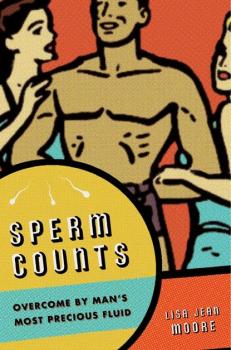ТОП просматриваемых книг сайта:
Управление, подбор персонала
Различные книги в жанре Управление, подбор персонала, доступные для чтения и скачиванияАннотация
Choice's Outstanding Academic Title list for 2013 In today’s schools, kids bullying kids is not an occasional occurrence but rather an everyday reality where children learn early that being sensitive, respectful, and kind earns them no respect. Jessie Klein makes the provocative argument that the rise of school shootings across America, and childhood aggression more broadly, are the consequences of a society that actually promotes aggressive and competitive behavior. The Bully Society is a call to reclaim America’s schools from the vicious cycle of aggression that threatens our children and our society at large. Heartbreaking interviews illuminate how both boys and girls obtain status by acting “masculine”—displaying aggression at one another’s expense as both students and adults police one another to uphold gender stereotypes. Klein shows that the aggressive ritual of gender policing in American culture creates emotional damage that perpetuates violence through revenge, and that this cycle is the main cause of not only the many school shootings that have shocked America, but also related problems in schools, manifesting in high rates of suicide, depression, anxiety, eating disorders, self-cutting, truancy, and substance abuse. After two decades working in schools as a school social worker and professor, Klein proposes ways to transcend these destructive trends—transforming school bully societies into compassionate communities.
Информация о книге
Автор произведения Jessie Klein
Жанр Управление, подбор персонала
Серия Intersections
Аннотация
Информация о книге
Автор произведения Judy Long
Жанр Управление, подбор персонала
Серия Feminist Crosscurrents
Аннотация
In Strip Club , Kim Price‒Glynn takes us behind the scenes at a rundown club where women strip out of economic need, a place where strippers’ stories are not glamorous or liberating, but emotionally demanding and physically exhausting. Strip Club reveals the intimate working lives of not just the women up on stage, but also the patrons and other workers who make the place run: the owner‒manager, bartenders, dejays, doormen, bouncers, housemoms, and cocktail waitresses. Price‒Glynn spent fourteen months at The Lion’s Den working as a cocktail waitress, and her uncommonly deep access reveals a conflict‒ridden workplace, similar to any other workplace, one where gender inequalities are reproduced through the everyday interactions of customers and workers. Taking a novel approach to this controversial and often misunderstood industry, Price‒Glynn draws a fascinating portrait of life and work inside the strip club.
Информация о книге
Автор произведения Kim Price-Glynn
Жанр Управление, подбор персонала
Серия Intersections
Аннотация
Still Lifting, Still Climbing is the first volume of its kind to document African American women's activism in the wake of the civil rights movement. Covering grassroots and national movements alike, contributors explore black women's mobilization around such areas as the black nationalist movements, the Million Man March, black feminism, anti-rape movements, mass incarceration, the U.S. Congress, welfare rights, health care, and labor organizing. Detailing the impact of post-1960s African American women's activism, they provide a much-needed update to the historical narrative. Ideal for course use, the volume includes original essays as well as primary source documents such as first-hand accounts of activism and statements of purpose. Each contributor carefully situates their topic within its historical framework, providing an accessible context for those unfamiliar with black women's history, and demonstrating that African American women's political agency does not emerge from a vacuum, but is part of a complex system of institutions, economics, and personal beliefs. This ambitious volume will be an invaluable resource on the state of contemporary African American women's activism.
Аннотация
Americans have long held fast to a rigid definition of womanhood, revolving around husband, home, and children. Women who rebelled against this definition and carved out independent lives for themselves have often been rendered invisible in U.S. history.In this unusual comparative study, Trisha Franzen brings to light the remarkable lives of two generations of autonomous women: Progressive Era spinsters and mid-twentieth century lesbians. While both groups of women followed similar paths to independence–separating from their families, pursuing education, finding work, and creating woman-centered communities–they faced different material and cultural challenge and came to claim very different identities. Many of the turn-of-the-century women were prominent during their time, from internationally recognized classicist Edith Hamilton through two early Directors of the Women's Bureau, Mary Anderson and Freida Miller. Maturing during the time of a broad and powerful women's movement, they were among that era's new women, the often-single women who were viewed as in the vanguard of women's struggle for equality. In contrast, never-married women after World War II, especially lesbians, were considered beyond the pale of real womanhood. Before the women's and gay/lesbian liberation movements, they had no positive contemporary images of alternative lives for women. Highlighting the similarities and differences between women-oriented women confronting changing gender and sexuality systems, Spinsters and Lesbians thus traces a continuum among women who constructed lives outside institutionalized heterosexuality.
Аннотация
2007 Choice Outstanding Academic Title Winner of the Passing the Torch Award from the Center for Lesbian and Gay Studies It has been called sperm, semen, seed, cum, jizz, spunk, gentlemen's relish, and splooge. But however the “tacky, opaque liquid that comes out of the penis” is described, the very act of defining “sperm” and “semen” depends on your point of view. For Lisa Jean Moore, how sperm comes to be known is based on who defines it (a scientist vs. a defense witness, for example), under what social circumstances it is found (a doctor’s office vs. a crime scene), and for what purposes it will be used (in vitro fertilization vs. DNA analysis). Examining semen historically, medically, and culturally, Sperm Counts is a penetrating exploration of its meaning and power.Using a “;follow that sperm” approach, Moore shows how representations of sperm and semen are always in flux, tracing their twisting journeys from male reproductive glands to headline news stories and presidential impeachment trials. Much like the fluid of semen itself can leak onto fabrics and into bodies, its meanings seep into our consciousness over time. Moore’s analytic lens yields intriguing observations of how sperm is “spent” and “reabsorbed” as it spurts, swims, and careens through penises, vaginas, test tubes, labs, families, cultures, and politics.Drawn from fifteen years of research, Sperm Counts examines historical and scientific documents, children's “facts of life” books, pornography, the Internet, forensic transcripts and sex worker narratives to explain how semen got so complicated. Among other things, understanding how we produce, represent, deploy and institutionalize semen-biomedically, socially and culturally-provides valuable new perspectives on the changing social position of men and the evolving meanings of masculinity. Ultimately, as Moore reveals, sperm is intimately involved in not only the physical reproduction of males and females, but in how we come to understand ourselves as men and women.
Информация о книге
Автор произведения Lisa Jean Moore
Жанр Управление, подбор персонала
Серия Intersections
Аннотация
Pirates are among the most heavily romanticized and fabled characters in history. From Bluebeard to Captain Hook, they have been the subject of countless movies, books, children's tales, even a world-famous amusement park ride. In Sodomy and the Pirate Tradition , historian B. R. Burg investigates the social and sexual world of these sea rovers, a tightly bound brotherhood of men engaged in almost constant warfare. What, he asks, did these men, often on the high seas for years at a time, do for sexual fulfillment? Buccaneer sexuality differed widely from that of other all- male institutions such as prisons, for it existed not within a regimented structure of rule, regulations, and oppressive supervision, but instead operated in a society in which widespread toleration of homosexuality was the norm and conditions encouraged its practice. In his new introduction, Burg discusses the initial response to the book when it was published in 1983 and how our perspectives on all-male societies have since changed.
Аннотация
Long perceived as the ultimate symbol of social breakdown and sexual irresponsibility, the single mother is now, in the context of welfare-to-work policies, often hailed as the new spokesperson for hard work and self-sufficiency. A dozen years after Dan Quayle denounced the television character Murphy Brown for making the decision to become a single mother “just another lifestyle choice,” President George W. Bush applauded single mothers for “heroic work,” and positive on-screen representations of single mothers abound, from The Gilmore Girls to Sex and the City to American Idol . Single Mother describes the recent cultural valorization of this figure that—in the midst of demographic changes in the U.S.—has emerged as the unlikely heroic and seductive voice of the new American family. Drawing on her own life as a single mother, interviews with dozens of other single mothers, cultural representations, and policies on welfare, immigration, childcare, and child custody, Juffer analyzes this contingent acceptance of single mothers. Finally, critiquing the relentless emphasis on self-sufficiency to the exclusion of community, Juffer shows the remarkable organizing skills of these new mothers of invention. At a moment when one-third of all babies are born to single moms, Single Mother is a fascinating and necessary examination of these new “domestic intellectuals.”
Аннотация
What role did sexual assault play in the conquest of America? How did American attitudes toward female sexuality evolve, and how was sexuality regulated in the early Republic? Sex and sexuality have always been the subject of much attention, both scholarly and popular. Yet, accounts of the early years of the United States tend to overlook the importance of their influence on the shaping of American culture. Sex and Sexuality in Early America addresses this neglected topic with original research covering a wide spectrum, from sexual behavior to sexual perceptions and imagery. Focusing on the period between the initial contact of Europeans and Native Americans up to 1800, the essays encompass all of colonial North America, including the Caribbean and Spanish territories. Challenging previous assumptions, these essays address such topics as rape as a tool of conquest; perceptions and responses to Native American sexuality; fornication, bastardy, celibacy, and religion in colonial New England; gendered speech in captivity narratives; representations of masculinity in eighteenth- century seduction tales, the sexual cosmos of a southern planter, and sexual transgression and madness in early American fiction. The contributors include Stephanie Wood, Gordon Sayre, Steven Neuwirth, Else L. Hambleton, Erik R. Seeman, Richard Godbeer, Trevor Burnard, Natalie A. Zacek, Wayne Bodle, Heather Smyth, Rodney Hessinger, and Karen A. Weyler.
Аннотация
In everyday language, masochism is usually understood as the desire to abdicate control in exchange for sensation—pleasure, pain, or a combination thereof. Yet at its core, masochism is a site where power, bodies, and society come together. Sensational Flesh uses masochism as a lens to examine how power structures race, gender, and embodiment in different contexts. Drawing on rich and varied sources—from 19th century sexology, psychoanalysis, and critical theory to literary texts and performance art—Amber Jamilla Musser employs masochism as a powerful diagnostic tool for probing relationships between power and subjectivity. Engaging with a range of debates about lesbian S&M, racialization, femininity, and disability, as well as key texts such as Sacher-Masoch’s Venus in Furs, Pauline Réage’s The Story of O, and Michel Foucault's History of Sexuality, Musser renders legible the complex ways that masochism has been taken up by queer, feminist, and critical race theories. Furthering queer theory’s investment in affect and materiality, she proposes “sensation” as an analytical tool for illustrating what it feels like to be embedded in structures of domination such as patriarchy, colonialism, and racism and what it means to embody femininity, blackness, and pain. Sensational Flesh is ultimately about the ways in which difference is made material through race, gender, and sexuality and how that materiality is experienced.
Информация о книге
Автор произведения Amber Jamilla Musser
Жанр Управление, подбор персонала
Серия Sexual Cultures










